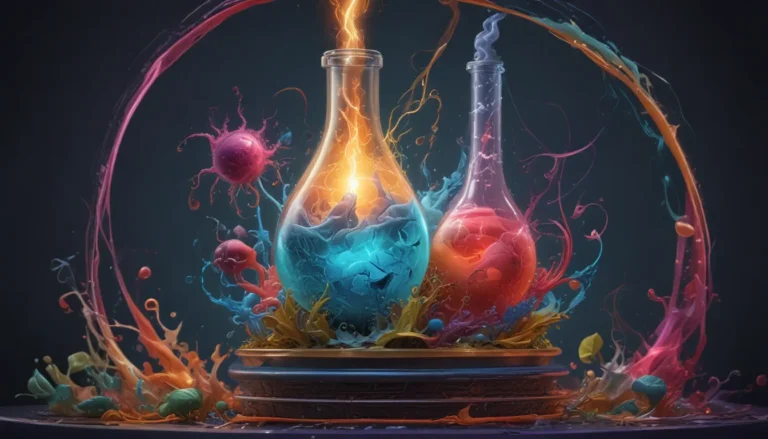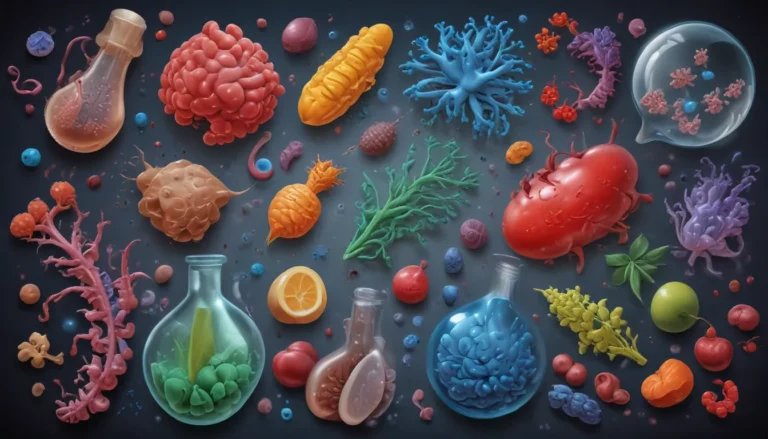A Note About Images: The images used in our articles are for illustration purposes only and may not exactly match the content. They are meant to engage readers, but the text should be relied upon for accurate information.
Have you ever wondered about the fascinating world of representative elements? These main group elements, found in Groups 1, 2, and 13-18 of the periodic table, hold a wealth of intriguing properties and behaviors that are essential to understanding chemistry. In this article, we will explore eight captivating facts about representative elements that will not only broaden your knowledge but also spark your curiosity about the wonders of chemistry. From the highly reactive alkali metals to the noble gases with their unique stability, each of these elements has a story to tell. So, buckle up and get ready to delve into the enthralling realm of representative elements as we uncover some fascinating aspects about their discovery, characteristics, and contributions to science and everyday life.
Unraveling the Secrets of Representative Elements
Representative elements, also known as the main group elements, are a crucial category of elements in the periodic table. These elements, found in groups 1, 2, and 13-18, exhibit similar properties and behaviors due to their electron configurations, making them essential for forming diverse compounds and playing a vital role in biological processes. Let’s take a closer look at some key facts about representative elements:
1. Representative Elements in Specific Groups
Representative elements can be found in groups 1, 2, and 13-18 of the periodic table. These elements share similar chemical properties and reactivity because of their electron configurations. This organizational structure helps scientists identify patterns and trends among the elements, leading to a deeper understanding of their behavior.
2. Formation of Diverse Compounds
One of the remarkable features of representative elements is their ability to form a wide range of compounds. From simple ionic compounds to complex covalent compounds, these elements play a pivotal role in the creation of various substances essential for our daily lives. Their versatile nature allows for the synthesis of a multitude of compounds with varying properties and applications.
3. Diversity in Metallic and Non-Metallic Properties
The representative elements encompass both metallic and non-metallic elements in the periodic table. This diversity in properties enables them to have a broad range of applications across various industries. From conducting electricity to reacting with other elements, these properties make representative elements indispensable in different fields.
Exploring the Significance of Representative Elements
Representative elements are not just part of the periodic table; they are essential building blocks that contribute to the advancement of science and technology. Let’s delve deeper into some intriguing facts about the impact of representative elements in various aspects of our lives:
4. Essential Role in Biological Processes
Elements like carbon, oxygen, nitrogen, and phosphorus, which are part of the representative elements, play a crucial role in biological processes. These elements are integral components of biomolecules such as proteins, nucleic acids, and carbohydrates, contributing to the functioning and structure of living organisms.
5. Predictable Periodic Trends
When moving across a period or down a group in the periodic table, representative elements exhibit consistent patterns in their properties. These trends include atomic size, ionization energy, electronegativity, and metallic character, providing scientists with valuable insights into the behavior of these elements.
6. The Unique Characteristics of Noble Gases
Among the representative elements, noble gases stand out for their low reactivity and stable electron configurations. Elements such as helium, neon, argon, krypton, xenon, and radon, which belong to Group 18, find applications in various industries, from lighting to cryogenics, showcasing their unique properties and practical uses.
Harnessing the Potential of Representative Elements
Representative elements are not just elements on a periodic table; they are fundamental components that drive innovation and progress across different fields. Let’s explore some fascinating facts about the practical applications of representative elements:
7. Foundation for Chemical Bonding
As their name suggests, representative elements form the basis for chemical bonding. By gaining, losing, or sharing electrons with other elements, they achieve a stable electron configuration, leading to the creation of ionic or covalent bonds. This process of bonding is essential for the formation of molecules and compounds in various chemical reactions.
8. Diverse Practical Applications
Representative elements find applications in a wide range of fields, from medicine to technology. Elements like sodium and potassium, essential for nerve function in the human body, highlight their significance in biological processes. Moreover, elements such as silicon, widely used in the semiconductor industry, demonstrate the practical applications of representative elements in manufacturing processes and technological advancements.
Conclusion: Embracing the World of Representative Elements
In conclusion, representative elements are not just elements in a periodic table; they are the building blocks of our understanding of chemistry and the natural world. By exploring their properties, behavior, and practical applications, we gain valuable insights that drive scientific advancements and technological innovations. From their role in biological processes to their contributions to industrial processes, representative elements continue to shape our world and pave the way for future discoveries and developments.
FAQs: Exploring More About Representative Elements
- What are representative elements?
-
Representative elements are elements found in the s and p blocks of the periodic table known for their distinctive electron configurations and ability to form compounds with other elements.
-
How many representative elements are there?
-
There are 8 groups of representative elements in the periodic table, totaling 32 elements, including alkali metals, alkaline earth metals, halogens, noble gases, and elements in the p block.
-
What are the characteristics of representative elements?
-
Representative elements exhibit similar chemical properties within their respective groups, showing predictable patterns in reactivity, ionization energy, and electronegativity. They often form compounds through electron sharing or transfer.
-
What are some examples of representative elements?
-
Examples of representative elements include hydrogen, lithium, oxygen, fluorine, and neon, each playing essential roles in chemical reactions and natural processes.
-
What are the applications of representative elements?
- Representative elements find applications in various fields like medicine, materials science, and environmental research. Halogens are used in disinfectants, while alkali metals are essential for batteries and industrial processes.
By exploring the fascinating world of representative elements, we not only enrich our understanding of chemistry but also uncover the remarkable roles these elements play in shaping our world. From their unique properties to their practical applications, representative elements continue to inspire scientists and researchers to push the boundaries of knowledge and innovation. So, let’s keep exploring, learning, and embracing the wonders of representative elements as we embark on our journey of discovery and understanding in the realm of chemistry and beyond.






